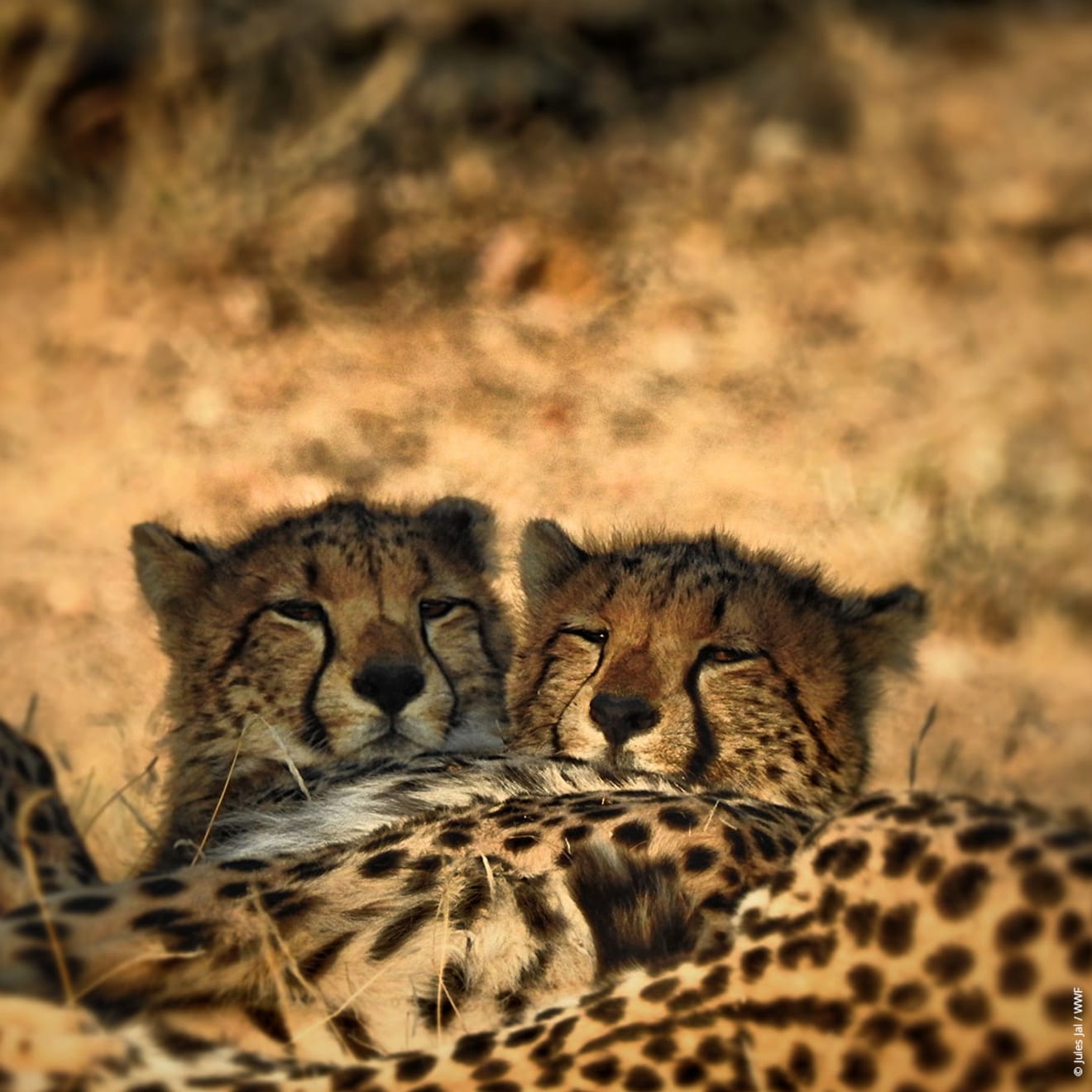Subject
- #Causes of Cheetah Extinction
- #Endangered Species
- #Cheetah
- #Cheetah Conservation Efforts
- #Cheetah is an Endangered Species
Created: 2024-01-31
Created: 2024-01-31 12:10
Did you know that the cheetah, known as the fastest animal in the world, is an endangered species?

IUCN
Cheetahs, primarily found in the grasslands of Africa and the Middle East, are an endangered species with only about 6,500 remaining worldwide. Listed as Vulnerable (VU) by the International Union for Conservation of Nature, cheetahs are highly likely to face a severe extinction risk in the wild within months or years.

IUCN
Cheetahs are animals that don't stay in one place and roam over a wide area. Due to this, they often reside outside protected areas. When cheetahs move outside protected zones, they are more likely to encounter humans. Humans feel threatened simply by the presence of cheetahs, a carnivorous animal. There are also frequent instances of cheetahs preying on livestock, leading to many people hunting them. As the distinction between cheetah habitats and human settlements becomes blurred, cheetah habitats continue to shrink.

WWF UK official Facebook
The indiscriminate capture of young cheetahs is also exacerbating the cheetah's endangered status. Young cheetahs, traded for as much as $10,000 per animal, are easy targets for poachers. It is estimated that over 300 young cheetahs are illegally sold each year. The loss of young cheetahs inevitably accelerates extinction.

IUCN
Experts also point to the genetic bottleneck caused by habitat loss as a reason for the cheetah's endangered status. A genetic bottleneck is a phenomenon where rapid habitat loss leads to a decrease in genetic diversity. The loss of genetic diversity makes individuals more susceptible to diseases, increasing the risk of extinction. Zoos exchange animals to promote genetic diversity among cheetahs. In fact, in 2021, a zoo in Japan donated two cheetahs to a zoo in Korea.

Cheetah Conservation Fund, photo by Suzi Eszterhas
The Cheetah Conservation Fund (CCF) is making efforts to protect cheetahs, including habitat restoration, volunteer programs, and livestock guarding dog programs. The livestock guarding dog program, implemented to prevent human-cheetah conflicts arising from cheetahs preying on livestock in human settlements, is expected to be particularly effective. They also operate rehabilitation centers to treat and care for injured cheetahs rescued from illegal capture, and collaborate with the Ministry of Environment, Climate Change and Tourism (MoECC) to combat illegal trading.
The non-profit wildlife conservation organization WildTrack is collaborating with AI analytics company SAS to conduct research to determine cheetah population information. Using the Footprint Identification Technique (FIT), a crowdsourcing technique where anyone can take and share animal footprint images, it's possible to monitor cheetah activity without harming them.
Hopefully, these various cheetah conservation efforts will continue, and the cheetah will no longer be racing towards extinction.
Comments0